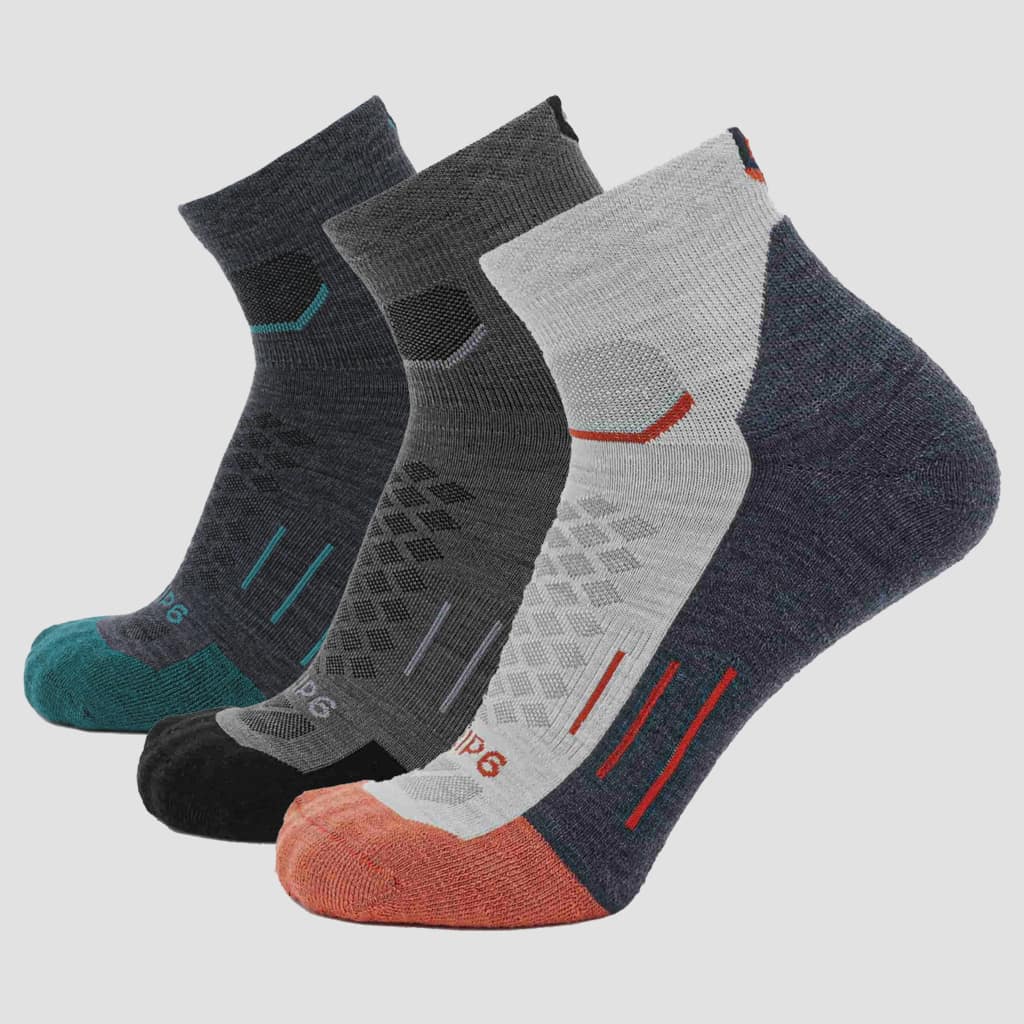Here's a fact that doesn't sit easy: 2.12 billion tons of waste are generated every year worldwide. (For conceptualizing just how big 1 billion is compared to 1 million, read this article. 1 million seconds is 12 days, but 1 billion seconds is 30 years.)
If you’re anything like us, you know that the amount of consumer waste people allow is not just a problem that needs fixing--it’s a fundamental flaw in the way products are designed.
So we set out to change that.
Very few products are made with durability in mind. Year after year, more and more products are made to fall apart so you have to buy a new one and keep feeding into the cycle of consumerism. But we strive to make products that last a lifetime. Reducing consumer waste is something we’re passionate about, so we wanted to break down some of the facts for you.
Let’s get started.
Durability: An Overlooked Solution to Waste Reduction
When pursuing eco-blogs and reading internet chatter, a fellow environmentalist looking to reduce waste will find that everyone says to consume less. But a fundamental problem with that task is that products are not built to last. If products fall apart, how do you consume less? Minimalism is a great goal to strive for, but what about products that are fundamental to modern life, products that you need?
The answer lies in the purchase. If you buy products made with durable materials, you will be able to use the items you need while not contributing to consumer waste.

Image: A breakdown of what we throw away. Image from Dumpsters.com with data from the EPA.
Better products that last longer means less waste--it’s as simple as that. And there just aren’t many options out there for consumers who want well-made products.
And consumers know that a higher price means better quality--they’re smarter than many companies give them credit for. Sure, some consumers shy away from the price tag that comes with durable products. But many buyers want products that last a lifetime, they’re just harder to find.

Our belts cost $35. That may seem like a high price for a buckle and a strap, but if you buy an $11 belt every couple years, your $35 belt that lasts over three decades is going to start looking like a better and better deal as the years go on.
The logic of “consuming less” as the primary way to reduce waste is not possible to achieve if companies don’t take the steps to make goods that last, or if consumers continue buying cheap, low-quality products. But we believe the best way to solve the problem is for each of us to take responsibility, and that means, for us, to take the first leap forward by making products that don’t need to be thrown away.
Packaging Material: The Secret Booster of Waste
But it’s not just buying products and throwing them away that causes high volumes of consumer waste: it’s the packaging that comes with it. Now, packaging waste makes up about one-third of the average landfill. The more non-durable, throw-away products companies market to consumers, the more packaging material fills up already overburdened landfills.
It’s not the product you’re throwing away that causes the majority of the issue--it’s the plastic wrap, the cardboard boxes, the miles and miles of packing tape, the paper invoices, and the puffed-up plastic that prevents the item from breaking. All of this goes in the trash, and all of it sits in a landfill for a timeframe approaching eternity.
65% of household trash is packaging material. And this could have only increased during the pandemic, which forced more people to order goods online.

Image: Plastic waste produced per person in kilograms each year. Image from Forbes.com.
Developing sustainable packaging materials is difficult, especially since many recycled items never make it to the recycling center, take more energy to break down and re-make, or end up in the ocean. Relying on sustainable packaging solutions is not an end-all-be-all solution.

Purchasing with intention--buying fewer things but making sure those things are durable, lasting products--is a key pillar to reducing packaging waste.
Can you imagine what would happen if households cut down on 65% of their waste? If they eliminated all of that extra packaging?
American Waste: The Highest in the World
It’s quite a paradox that one of the most developed countries in the world produces the most waste. Studies show that each American produces 4.5 pounds of trash a day, while the global average is just at 1.6 pounds. This needs to be fixed, and soon.
The truth is, it isn't about who to blame. Consumers need goods, and companies provide them. But if companies continue providing goods that need to be thrown out, progress will never be made.

Image: Waste management hierarchy from the EPA. We try to be at the top of this funnel: source reduction and reuse. Image from epa.gov.
American companies have the ability to produce better products that last longer. They have the ability to be up-front with their consumers about their process and where they source their materials. They can do all of this, so why don’t they?
The Pandemic: The Acceleration of Consumer Waste
The Pandemic rewrote the rules of how we live. But it didn’t create entirely new habits--it just accelerated tendencies that were already developing.
One of the habits that was undoubtedly accelerated is online shopping. E-commerce increased 31.8% in the second quarter of 2020. Staying home and shopping remotely was a public health measure, but because products aren’t built to last, consumers had to buy and re-buy these products, thus generating even more packaging waste.
We believe you should only have to buy a product once. That’s right: once.
But buying more durable, high-quality goods was difficult for consumers during the pandemic. With the high rate of job loss and parents who had to leave work to stay home with children due to virtual schooling, income and ability to cover household expenses dropped for many Americans. According to one study, three out of ten adults surveyed had trouble paying for usual household expenses in the last seven days. When living paycheck to paycheck, it’s hard to justify more expensive products, no matter the quality.
There is no easy answer in times of hardship. But, if companies took steps to either reduce packaging waste or make products more durable, consumer waste will drop significantly. Companies choosing to manufacture products within the United States would also help create jobs, which can pull people out of poverty. But those are all long term solutions, which doesn’t necessarily help short term needs.
That’s why we play the long game.
In Conclusion: The Long Game and Its Value to the U.S.
There’s no easy way to fix big problems. And the issues of waste, sustainability, and wealth gaps created and accelerated by the pandemic are just about as big as they come. But with a long term approach, we can make real, lasting change in the U.S.

Image: Workers getting it done right here at our Salt Lake City manufacturing facility.
Here’s what playing the long game looks like to us:
- Making goods that last three decades, not three months, to help your wallet and your well-being. There's nothing fun about everything around you breaking.
- Sourcing our materials domestically to support the American economy and American workers.
- Manufacturing everything in-house, so American workers learn valuable trade skills to take with them for life.
- Reducing the overall amount of consumer waste by making products that don’t need to be replaced frequently.
In our opinion, the long game is the only game to play if we want a healthy planet and a healthy economy. So, are you in?







Leave a comment
All comments are moderated before being published.
This site is protected by hCaptcha and the hCaptcha Privacy Policy and Terms of Service apply.